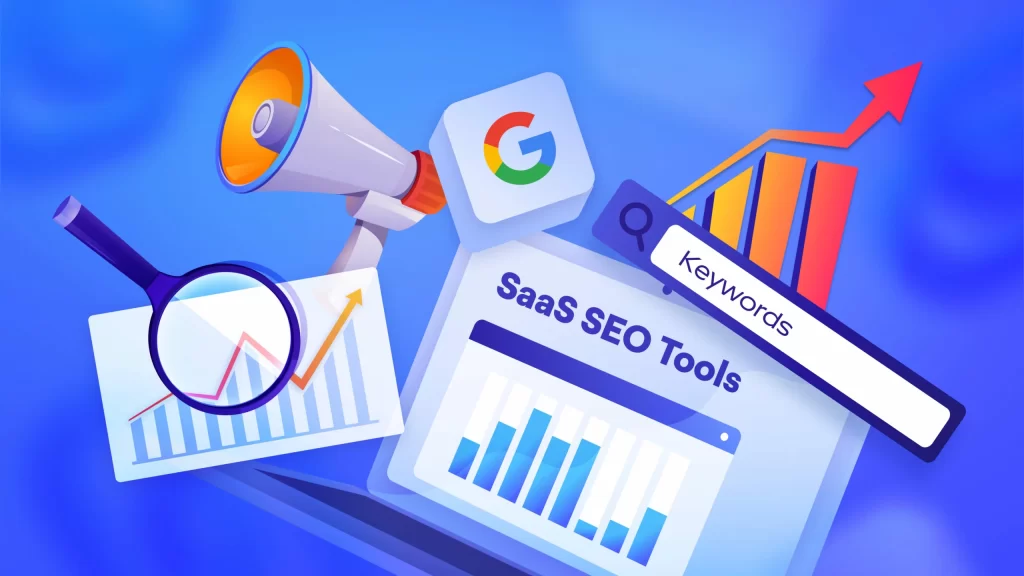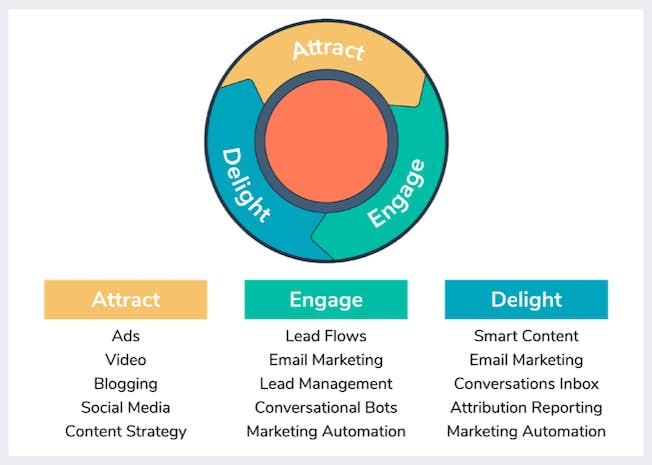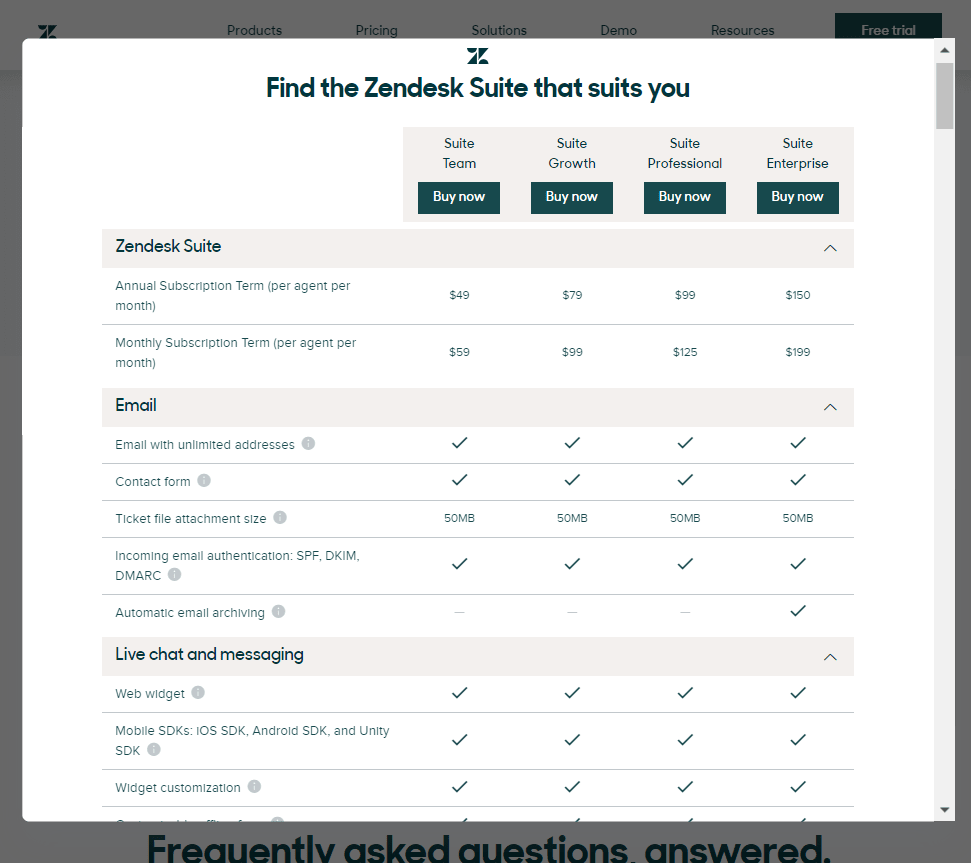SaaS companies that have a growth rate of 20% or less have a 92% chance of going out of business in the next few years.
Growing at a consistent rate and scaling your business to be able to support that growth is crucial for the survival of a SaaS business.
B2B Saas businesses in particular rely on cultivating a niche group of customers and retaining them. It requires adept scaling on your part to facilitate expanding operations.
We’ve come up with some comprehensive marketing strategies to help you scale your B2B SaaS business to boost growth and support it efficiently.
4 marketing strategies to scale your B2B SaaS business
Scaling is defined as a sustainable way of growing a business, meaning that you’re able to increase revenue without a substantial increase in costs. The framework and tools you have should be able to adjust to the increased workload with ease to support a smooth transition.
Scaling is different for SaaS businesses — especially B2B SaaS businesses than for businesses in general. They rely on identifying a niche market and retaining those customers to grow a strong bond with them.
You don’t necessarily need to scale your business to serve more customers but to serve the ones you have efficiently and in more ways. The focus of scaling for B2B Saas businesses is to create a sturdy framework that effortlessly handles more functions over time.
Given below are some marketing tactics to help you identify, attract, and retain your target customers by scaling your B2B SaaS business for growth.
1. Deploy targeted SEO practices
B2B SaaS SEO refers to optimizing the business’ website to attract organic traffic from business users.
While there are a plethora of SEO tactics you can deploy, choosing targeted practices will help you save your time and resources and generate better results.
This goes back to identifying your target demographic and using SEO practices that will resonate with them.
If you’re following a guide to SaaS SEO, you will know that a targeted SEO strategy is easier to mold according to your changing needs. You’ll be able to scale your resources much more easily and keep the core of your marketing efforts intact. Some of the most efficient practices for B2B SaaS businesses are:
- Keywords — conduct a thorough keyword search to identify the ones that will improve your visibility in the SERPs.
- Backlinks — Indulge in both internal linking (adding links from your website to the other pages of your website) and external linking (adding links from other websites on your own) to build an authoritative web presence.
- On-page SEO — Optimize every element of your website to make it more visible in the search engine. This includes improving the title tags, meta tags, copy, and images.
- Technical SEO — Technical SEO covers all the technical elements of your website such as the code, structure, and page speed.
a) Squibler scaled itself with an SEO strategy backed by backlinks
Squibler is a SaaS tool that helps writers write better and connect with a community. Within a year of its launch, the company was able to establish itself, grow, and scale to its growth with ease.
It was able to do it so smoothly because of its excellent marketing strategies that prioritized a few most beneficial practices. One of them was backlinking. The company noticed that most of its users were interested in tools that will help them improve.
So, it launched a backlinking campaign where it posted over 100 high-quality articles on its blog. Users repeatedly visited the website to make the most of the valuable information and the website gained authority due to the many backlinks.
2. Indulge in inbound marketing to create more value with your content
Inbound marketing refers to creating content that aligns with the customer’s needs. It’s a customer-centric approach that cuts out the fluff in your content, making it direct and valuable.
It may take some research to create concentrated content but it does help in attracting the right kinds of customers that would be more likely to maintain a long-term bond with you.
Content marketing costs 62% less than traditional marketing while generating 3 times more leads. Inbound marketing helps you make it more targeted and focused on your core audience.
Content created with the inbound marketing approach is inherently scalable as your operations increase. Your content will stay focused on the pain points of the customers and not go awry.
Here are some inbound marketing tips to help you ace your B2B marketing strategies:
- Research your target audience about their likes, dislikes, pain points, and how they react to similar products. It helps you in understanding their problems for which they’re seeking solutions.
- Experiment with different kinds of content types for the same thing. For example, a solution to the pain point can be expressed as a blog, video, podcast, white paper, etc.
- Build a user-friendly website that is intuitive to the user’s actions and assists them right away.
- Deploy chatbots on your web pages to engage with the user right away and not make them look/wait for the solution.
a) HubSpot scales itself with customer-centric inbound marketing
HubSpot is an excellent example of acing inbound marketing to scale oneself as a SaaS company.
It constantly shares thought leadership content on trending industry topics. It doesn’t just share them as is but gives its own fresh take on the topics.
Coupling this with research-driven data and lead magnets such as easy-to-use templates, HubSpot’s content becomes immensely valuable and helpful to its target audience. This is what their audience keeps returning to, giving the company great organic traffic.
They don’t need to create content over and over as they scale. The content they create is so valuable that it’s of use to their new and old users alike. This ends up saving them resources by scaling their content right from the beginning.
3. Retain customers by helping them make the most of your service
We talked earlier about expanding the scope of operations to help the existing customers in the most number of ways through your SaaS offering. As you come up with new used cases of your product, advertise them extensively to let your audience know about them.
This has the dual effect of reminding the users of forgotten or new features while attracting new users with new uses of the same product. Marketing your product based on its many uses will help you keep a strong user base that consistently uses it, fostering growth in a scalable manner.
Here are some ways to invite your user base to make the most of your service:
- Create a seamless onboarding experience. It’s a one-time expense that helps new and old customers alike.
- Develop a hands-on customer service system users can reach out to at any point for guidance and help.
- Allow customers to contact you through multiple channels to create an omnichannel support system.
- Collect feedback from users about their experience with your SaaS product and how you can improve it.
a) Grammarly sends weekly updates to its users
Grammarly is widely used by businesses and individuals alike to improve their writing. To keep their users in a loop, the company sends out weekly emails analyzing their performance. A weekly email is not too frequent that it might vex the user.
Getting analyses of your one’s own writing helps users improve themselves with tangible information. It motivates them to use the service more to get better and discover new ways to make the most out of it.
4. Simplify your pricing to keep it universal
Keeping the pricing of your subscription packages simple is a boon in scaling expanding businesses. You don’t want to confuse the users and invite them to pick a pack for them right away.
It helps keep things in order when your business grows. It’s easier to list three pricing models than eight. That’s what the user will come back to over and over when they evaluate upgrading their pack or recommending your product to someone else.
a) Zendesk’s simplified pricing upped its conversion rate
Zendesk only has four pricing plans and they went over and above to streamline them to highlight the pain points each pack solves. This helped customers understand the plans better and make the decision to subscribe quicker, upping their conversion rate.
Focus on providing value to customers in different ways with your product for scalable growth
Scalability is key to growth for a B2B SaaS company as it helps you expand your reach in the market sustainably. Focus on expanding your operations in a way that they support more function for your users.’
Advertise the many use cases your service offers to attract different kinds of users. Keep the pricing simple to not confuse incoming leads. And create content that directly addresses and solves the pain points of the users to show them the value you offer.
Let us know in the comments how you think marketing strategies can facilitate scalable growth for SaaS companies.
Author bio
Atreyee Chowdhury is a freelance content writer with more than 10+ years of professional experience. She’s passionate about helping SMBs and enterprises achieve their content marketing goals with her carefully crafted and compelling content. She loves to read, travel, and experiment with different cuisines in her free time. You can follow her on LinkedIn.










